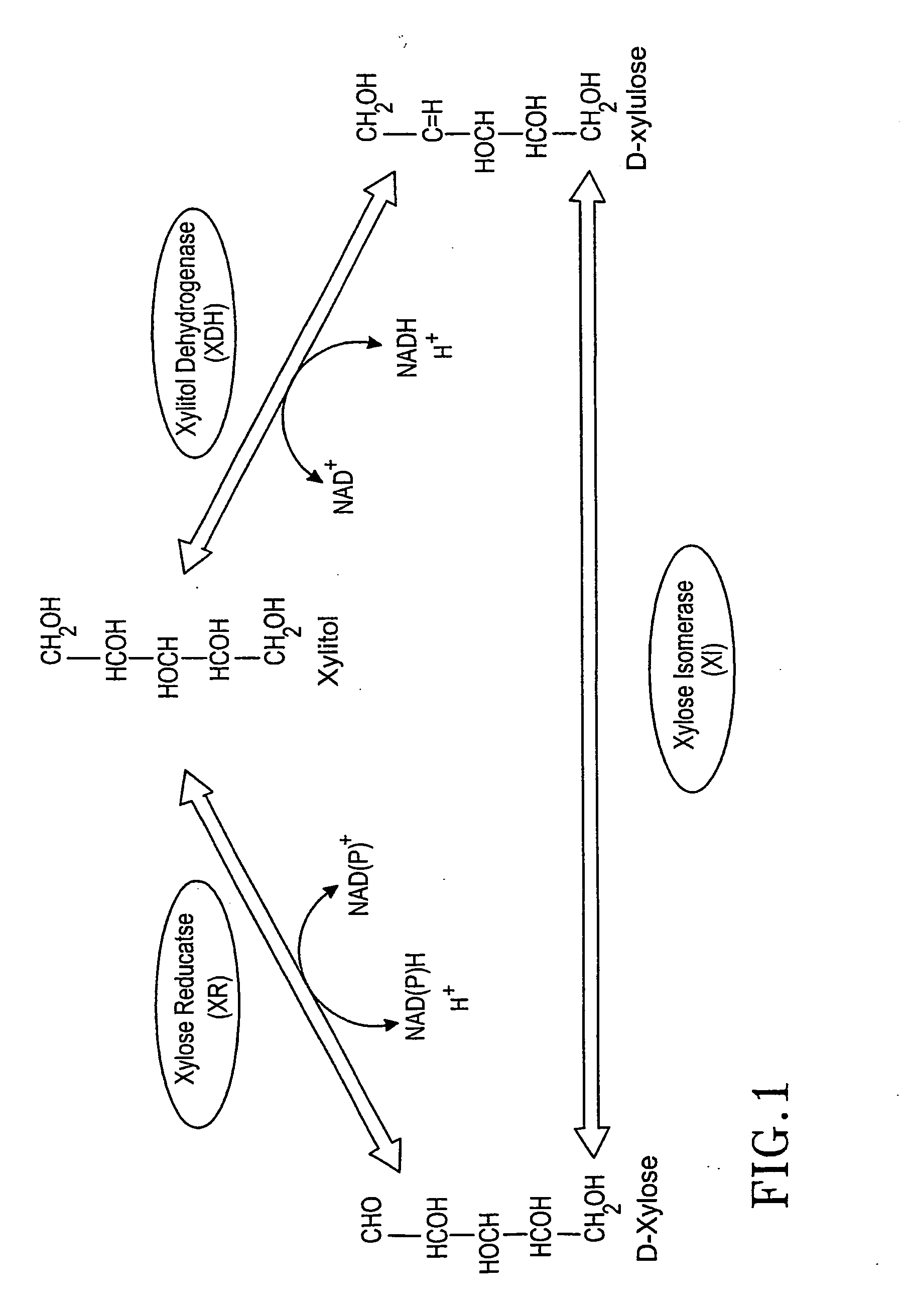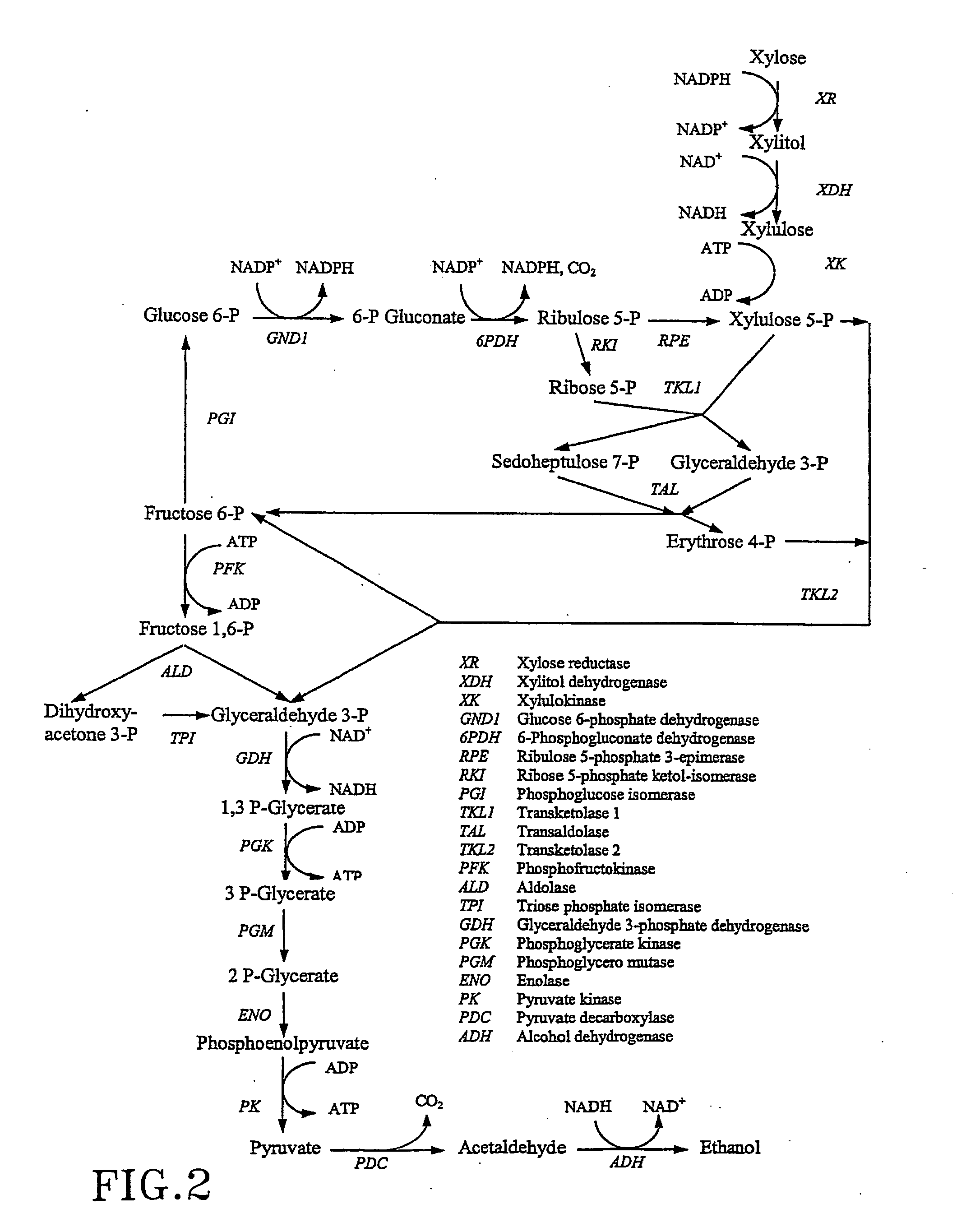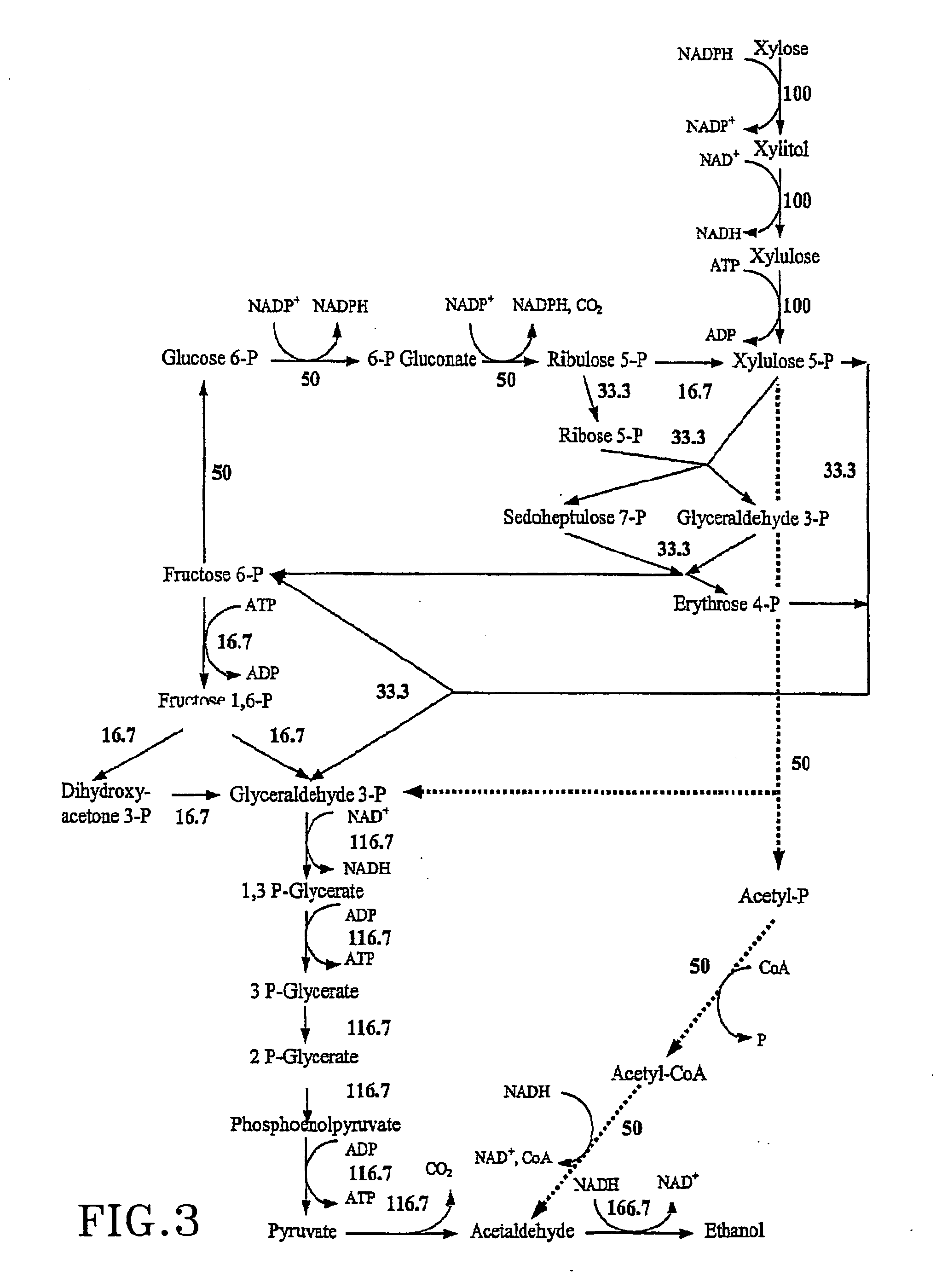Metabolic engineering for improved xylose utilisation of Saccharomyces cerevisiae
a technology of saccharomyces cerevisiae and xylose, which is applied in the field of metabolic engineering to improve the utilisation of xylose, can solve the problems of poor growth and ethanol yield of recombinant i>s. cerevisiae /i>can not utilise pentoses like xylose and arabinose, and the formation of considerable xylitol by-products
- Summary
- Abstract
- Description
- Claims
- Application Information
AI Technical Summary
Problems solved by technology
Method used
Image
Examples
Embodiment Construction
[0036] It has now been found possible to improve ethanol production in accordance with the present invention, which method for preparing an ethanol producing, optionally xylose utilizing strain of Saccharomyces cerevisiae comprising genes for overexpression of xylose reductase, xylitol dehydrogenase and xylulokinase, is characterized in that in addition to said genes, the genes for production of phosphoacetyltransferase, and acetaldehyde dehydrogenase are introduced and, optionally overexpressed, following a new metabolic pathway for regeneration of NAD+
[0037] In a preferred embodiment a gene for production of phosphoketolase is introduced, and optionally overexpressed.
[0038] In accordance with a preferred embodiment the genes for production of phosphoketolase, phosphoacetyltransferase (also named phosphotransacetylase), and acetaldehyde dehydrogenase are derived from any procaryotic organism.
[0039] In accordance with a further preferred embodiment the gene encoding phosphoketolas...
PUM
| Property | Measurement | Unit |
|---|---|---|
| pH | aaaaa | aaaaa |
| pH | aaaaa | aaaaa |
| pH | aaaaa | aaaaa |
Abstract
Description
Claims
Application Information
 Login to View More
Login to View More - R&D
- Intellectual Property
- Life Sciences
- Materials
- Tech Scout
- Unparalleled Data Quality
- Higher Quality Content
- 60% Fewer Hallucinations
Browse by: Latest US Patents, China's latest patents, Technical Efficacy Thesaurus, Application Domain, Technology Topic, Popular Technical Reports.
© 2025 PatSnap. All rights reserved.Legal|Privacy policy|Modern Slavery Act Transparency Statement|Sitemap|About US| Contact US: help@patsnap.com



